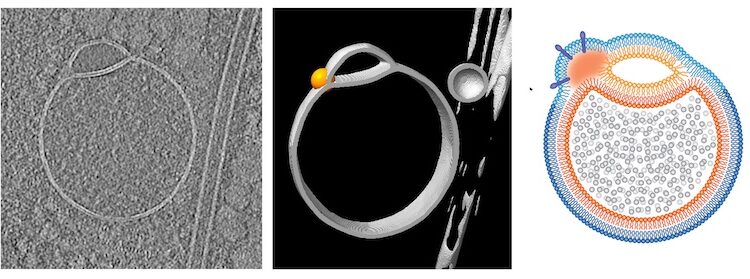
CHARLOTTESVILLE, Va., April 1, 2011 — AIDS patients, organ transplant recipients and others suffering from weakened immune systems are particularly vulnerable to a group of fatal cancers caused by the human herpes virus KSHV, or Kaposi sarcoma-associated herpes virus. Until now scientists have known very little about how this virus invades and attacks the body on a cellular level – information that’s vital in their ability to treat and prevent such deadly cancers as Kaposi’s Sarcoma, which gives the virus its name.
A recent groundbreaking study from University of Virginia School of Medicine researchers now provides strong evidence that the KSHV virus invades the body through human saliva and silently infects a certain type of B cell found in the tonsils. Their findings, published in the February issue of the Journal of Clinical Investigation (JCI) and featured as an “Editor’s Pick,” could help scientists block the spread of the virus within an individual and between people, thus preventing the early onset of cancer.
In addition to Kaposi’s sarcoma, which is the most common cancer among AIDS patients worldwide, KSHV also is known to cause Multicentric Castleman disease (MCD) and primary effusion lymphoma (PEL). Current treatments prolong survival by a few years, at best.
“Despite the immense morbidity and mortality associated with these three KSHV-associated tumors, the exact type of cells that KSHV infects when people first come into contact with it has remained elusive until now,” says Dean Kedes, associate professor of microbiology and medicine in the UVA School of Medicine and senior author of the study. Research was conducted in the UVA Myles Thaler Center for AIDS and Human Retrovirus Research.
The subtype of human B cells that Kedes’ research team determined as the target for KSHV is known as IgM lambda B cells, named for the specific type of antibody these cells produce.
UVA investigators further demonstrated that KSHV infection of the IgM lambda cells leads to profound changes in the appearance and behavior of the cells – characteristics that closely resemble those of tumor cells in individuals with KSHV-associated cancers.
“These findings provide the first hard evidence that these tonsillar cells could represent the earliest precursors to these human malignancies,” says Kedes.
“These initial findings are groundbreaking,” Kedes points out. “However, only one in 20 or 25 of the IgM lambda B cells appears to be susceptible to KSHV infection. So the next step in our research will be to determine the molecular characteristics that make one cell type virally susceptible and other similar cell types appear relatively resistant.”
By fully understanding these processes of infection at a detailed molecular level Kedes and his team hope to identify one or more potential weaknesses in the viral pathway that might be particularly susceptible to therapeutic intervention.
“Although the most immediate implications from our findings will have the greatest impact on KSHV-infected patients with weakened immune systems, our future research holds promise in providing new insights into general human B cell biology and other viral and non-viral B cell tumors.”
Kedes’ study, “KSHV infects a subset of human tonsillar B cells, driving proliferation and plasmablast differentiation,” was also featured in JCI ’s March 2011 Commentary, “Unraveling virus-induced lymphomagenesis,” as one of three major recent studies that have contributed significantly to the field’s body of basic research regarding KSHV infection of B cells and its role in the formation of lymphomas.


